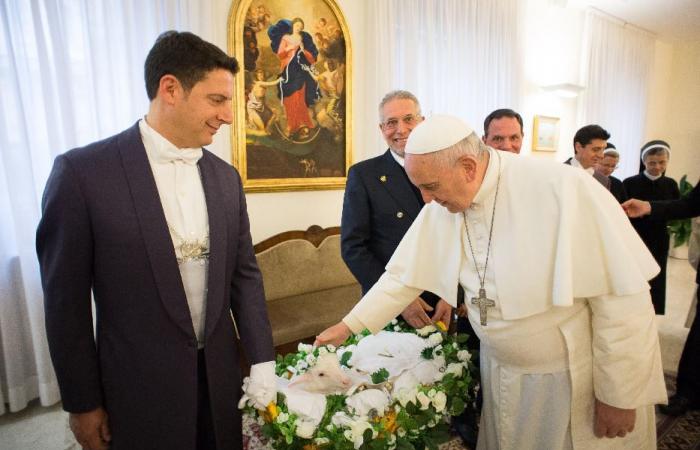The Blessing of the Lambs of St. Agnes in 2015 – Sicilians
They are a simple strip of wool, yet they have a strong symbolic value for the Church because they represent the link between the Successor of Peter, the Pope, and the other bishops scattered throughout the world: this is the deepest meaning of the palli which every year they are blessed before the celebration of Saints Peter and Paul in San Pietro.
To understand the meaning of this gesture it is necessary to place it within today’s celebration, dedicated to two fundamental figures in the history of the Christian community. According to the Roman Martyrology (the book at the basis of the liturgical calendars) «Simon, son of Jonah and brother of Andrew, first among the disciples professed that Jesus was the Christ, Son of the living God, from whom he was called Peter. Paul, apostle of the Gentiles, preached Christ crucified to the Jews and Greeks. Both in the faith and love of Jesus Christ announced the Gospel in the city of Rome and died martyrs under the emperor Nero: the first, as tradition says, crucified upside down and buried in the Vatican near the Via Trionfale, the second pierced with the sword and buried on the Via Ostiense. On this day the whole world celebrates their triumph with equal honor and veneration.”
A pallium – Vatican Media
At the beginning of this morning’s celebration in St. Peter’s Basilica, therefore, the Pope blessed the palli, which are in fact a band of white wool, approximately six centimeters wide, curved in the center, so that they can be placed on the shoulders above the liturgical vestment, and with two black flaps hanging in front and behind, so that – seen from both the front and the back – the vestment resembles the letter “Y”. The pallium is decorated with six black silk crosses, one on each tail and four on the curvature, and is garnished, front and back, with three gold pins and jewels (acicula).
Traditionally it is made with the wool of lambs raised in the Trappist Abbey of the Three Fountains in Rome, lambs that are blessed by the Pope on the feast of Saint Agnes, January 21. The pallium is instead woven by the nuns of the Benedictine monastery of Santa Cecilia in Trastevere. Symbol of the good shepherd and the Lamb crucified for the salvation of men, the pallium indicates the special bond that unites the Pope with the metropolitan sees, that is, archdioceses or archeparchies to which one or more suffragan dioceses may be linked. Metropolitan and suffragan sees constitute an ecclesiastical province.
Since 2015, the methods of conferring the sacred insignia have been modified. In fact, it is no longer imposed directly by the Pope during the celebration but only received from his hands in private form at the end of the concelebration every 29 June in St. Peter’s Basilica. In fact, Francis has given the apostolic nuncios the mandate to impose the pallium on the individual metropolitans in their respective archdioceses, to encourage the participation in the liturgical ceremony of the suffragan bishops and the people of God, and thus help in the understanding and appreciation of the insignia.
This year there are 42 metropolitan archbishops who are entitled to the pallium; among these six are the Italians: Ciro Miniero (Taranto), Giorgio Ferretti (Foggia-Bovino), Biagio Colaianni (Campobasso-Boiano), Davide Carbonaro (Potenza-Muro Lucano-Marsico Nuovo), Riccardo Lamba (Udine), Gherardo Gambelli (Florence).






